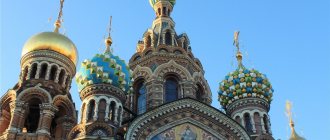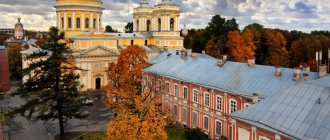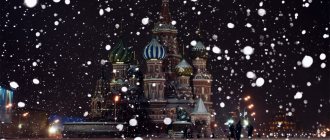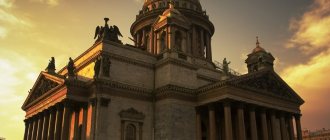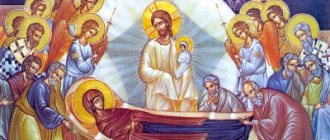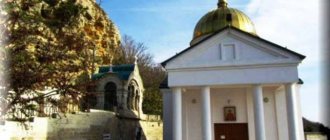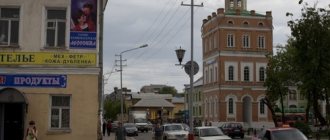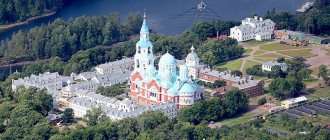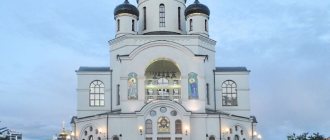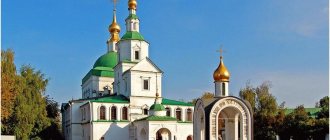Suzdal | Sights of Suzdal | Monasteries
Pokrovsky and Spaso-Evfimiev monasteries in Suzdal. Photo: Pavel Sukhov, 2015.
Sites for the construction of monasteries in Suzdal were usually chosen in the immediate vicinity of the Kamenka River. First of all, in the 11th century, the Dmitrievsky Monastery arose. In the 13th century, 8 monasteries were already known, and in the 14th century two more were added to them. Over time, some monasteries disappeared, others turned into parish churches. Currently, five monastery ensembles have been preserved in Suzdal: Spaso-Evfimiev, Pokrovsky, Rizpolozhensky, Aleksandrovsky and Vasilyevsky.
Suzdal monasteries influenced the layout of the city, expanding it to the north, south and east. Monastic architecture resonates powerfully in the city panorama of Suzdal, giving real features to the “Heavenly City”. Monastic architecture subtly reflected changes in state and church life, in the interpretation of issues of faith, and in aesthetic ideas. Rare examples of Russian architecture of the 16th-17th centuries have been preserved in the Suzdal monasteries: three-domed cathedrals, refectory churches, pillar-shaped churches under bell towers, double-tented gates, hospital chambers, internal staircases, a two-pillar vault structure, an official hut. The monasteries of Suzdal, founded and supported by the patricians of the society, became the focus of Orthodox culture, artistic and spiritual treasures.
Monastery of Saint Euthymius
Spaso-Evfimiev Monastery in Suzdal. View from the Conception Refectory Church of the Intercession Monastery. Photo: Pavel Sukhov, 2021.
The monastery was founded in 1350 by Prince Konstantin Vasilyevich of Suzdal-Nizhny Novgorod. Located in the northern part of the city of Suzdal on the high left bank of the Kamenka River. There are many diverse monuments concentrated on the territory of the monastery. Twelve fence towers, of which one is twenty-two meters high - the entrance one - with two spans, represent a unique feature in the architecture of Suzdal. Currently, the monastery is used as a large museum complex.
Apothecary garden and orchard
Having passed through the passage tower, we find ourselves on a huge monastery territory. On the right, behind a low fence, is the Apothecary Garden , where the monks grew medicinal plants. Behind it is an orchard . Plant growing was one of the types of monastic obedience. Nowadays, the Apothecary's vegetable garden and garden have been recreated. More than 70 species of medicinal herbs, fruit and berry trees and shrubs grow here. Next to them, near the fortress wall, there is a children's playground.
Apothecary garden and monastery tower. Behind them you can see the bell tower of the Church of the Smolensk Icon of the Mother of God
Apothecary garden
Apothecary garden
Orchard
Well
Pokrovsky Monastery
Intercession Monastery in Suzdal. Photo: Pavel Sukhov, 2015.
The Intercession Monastery is located in the northwestern part of Suzdal, in the lowland of the right bank of the Kamenka River. Its church buildings and wooden cells are surrounded by a stone wall with nine towers. The foundation of the monastery dates back to 1364 and is attributed to Prince Andrei Konstantinovich of Suzdal-Nizhny Novgorod. The Intercession Monastery in Suzdal is famous for the fact that for many years it was a place of exile for many noble women. Currently it is a functioning convent.
Story
On July 7, 1445, a battle took place near the monastery between the army of the Moscow Grand Duke Vasily II (the Dark) and the Kazan Tatars under the leadership of the princes Yakub and Manush, the sons of Khan Ulu-Muhammad.
Vasily II with an army of one and a half thousand defeated the soldiers of the princes and they retreated, but when the prince began to pursue them, the Tatars unexpectedly turned back and dealt a crushing blow to the Russian army.
In the battle, Vasily II fought bravely, but was wounded and as a result, he and his cousin Mikhail Vereisky, the son of Andrei Pozharsky, were captured. In accordance with the enslaving agreement, they were released on October 1, 1445. Apparently, according to the terms of the agreement, a considerable sum was paid, and several cities were given over for feeding.
Presumably, under this agreement, the Kasimov Khanate was created in Meshchera, the first khan of which was the son of Ulu-Muhammad, Prince Kasim.
Having won the victory, the Tatar princes stayed at the Spaso-Evfimiev Monastery, but the monastery was not burned or robbed.
Deposition of Robe Monastery
Deposition of Robe Monastery in Suzdal. Photo: Pavel Sukhov, 2006.
The most ancient monastery surviving in Suzdal. Its ensemble is located at the highest point of the city. The abbess of this monastery was Euphrosyne of Suzdal, canonized as a local saint. In the Robe Deposition Monastery there is the tallest bell tower in Suzdal (1813-1819) - the height with the spire is 72 meters. The unique Holy Gate (1688) adorns the southern facade of the monastery fence. In 1999, the monastery was transferred to the Vladimir-Suzdal diocese.
"Pancake" and the combat move
We walked around almost the entire monastery. There are benches throughout the territory, near the entrance there is a “Pancake House” , where you can eat inexpensively and tasty. Nearby there is a staircase to the combat gallery .
Passage Tower and Pancake House
Alexander Monastery
Alexander Monastery in Suzdal. Photo: Pavel Sukhov, 2010.
The Alexander Monastery in Suzdal is located on the high bank of the Kamenka between the Spaso-Evfimiev and Rizpolozhensky monasteries. Of the buildings of the Alexander Monastery, the following have been preserved: the Ascension Church, typical of Suzdal of the late 17th - early 18th centuries, with an octagonal pillar-shaped bell tower placed on a low quadrangle (1695) and the monastery gate built by the Suzdal master of the 18th century Gryaznov in the form of a powerful single-span cube topped with a faceted tiered drum. The monastery was transferred to the diocese in 2006.
Mausoleum of Prince Dmitry Pozharsky
On the eastern side of the Transfiguration Cathedral there is a marble mausoleum . His fate is tragic. In the past, at the altar of the Transfiguration Cathedral there was a family tomb of the Pozharsky and Khovansky princes - zealous contributors to the monastery. In 1858-1885, using public donations, a carved marble mausoleum with a mosaic panel with the image of the Savior was erected over the grave of Prince Dmitry Pozharsky (1578-1642). The project was carried out by the architect, professor of the Academy of Arts A.M. Gornostaev. In 1933 this building was dismantled.
By 2009, using surviving drawings and photographs, the mausoleum was recreated near its original location. A bronze door with a bas-relief leads into the tomb. A carved cross was installed above Pozharsky’s grave. Next to it is a miraculously surviving fragment of the facade of the old mausoleum of D.M. Pozharsky.
Recreated tomb of the Pozharsky princes
Cross at the burial site of Prince Dmitry Pozharsky and the mausoleum. Between them is a fragment of the facade of the 19th century mausoleum, discovered during archaeological excavations
Spaso-Preobrazhensky Cathedral and the tomb of Prince Dmitry Pozharsky
Vasilyevsky Monastery
Vasilyevsky Monastery in Suzdal. Photo: Pavel Sukhov, 2014.
The ensemble of monuments of the Vasilievsky Monastery is located in the eastern part of Suzdal, on the high bank of the Kamenka River, on the road to the village of Kideksha. On the territory of the monastery there is the Vasilyevsky Cathedral of 1669 with a bell tower and the warm Sretenskaya Church of the late 17th century. The existing stone walls date back to the second half of the 17th century. In 1995, the monastery was transferred to the Russian Orthodox Church and has been active again since then.
Belfry
The belfry was built at the beginning of the 16th century; later it was rebuilt several times. At the bottom of the building a small church was built in the name of the Nativity of John the Baptist. It was probably built in honor of the birth of Ivan's son to Prince Vasily III in 1530 (the future Ivan the Terrible).
The clock on the belfry was placed on a quadrangular turret on the eastern and western sides; now only the dials remain there.
The selection of bells from the belfry was destroyed in 1932. Currently, the belfry has 19 bells taken from other bell towers. The oldest of the bells dates back to the end of the 16th century.
The ringing of bells is not associated with religious services, but is performed by museum staff five times a day during excursions.
Prison building
Behind the Transfiguration Cathedral is the darkest place of the Spaso-Euphemius Monastery - the prison building , separated from the monastery territory by a wall. In 1766, by order of Catherine the Great, a prison was opened here “for insane convicts,” in which people of clergy and secular rank were kept. In 1829, by order of Emperor Nicholas I, only clergy began to be sent to prison.
Prison building
The prisoners of the prison were the Decembrist Fyodor Shakhovskoy, who died in 1829 and was buried in the prison cemetery, the monk-foreteller Abel, who died here in 1841, Old Believer clergy - Alimpy, Arkady, Konon, Gennady, the leader of the jumpers sect Maxim Rudometkin, Old Believer Fyodor Kovalev, Arkhangelsk philanthropist Vasily Rakhov, founder of the Churikov movement Ivan Churikov and others. Many prisoners spent decades in captivity.
Prison building
For the first time, A.I. Herzen spoke about the existence of a prison in the Spaso-Evfimiev Monastery in the novel “The Past and Thoughts”:
Now there are no longer political prisoners in this monastery, although the prison is filled with various priests, clergymen, disobedient sons about whom parents complained, etc. The Archimandrite, a broad-shouldered, tall man in a fur hat, showed us the prison yard. When he got up, a non-commissioned officer with a gun approached him and reported: “I have the honor to inform Your Eminence that everything is fine in the prison castle, there are so many prisoners.” The archimandrite blessed him in response. What a mess!
Corridor of the monastery prison
In 1905, by the highest decree of Emperor Nicholas II, the last prisoners of the prison were released.
Prison cell, reconstruction
In 1923, a camp was opened in the Spaso-Evfimiev Monastery for the “re-education” of ideological opponents, which was run by the OGPU (from 1934 - the NKVD). In 1935 it was converted into a special purpose prison of the NKVD. In addition to the prison building, prisoners were housed in the “white building” - the building of former monastery cells. The “Suzdal Bastille” is less known than Solovki, but it was no less terrible. According to the recollections of prisoners there, “the internal prison on Lubyanka Square seems like paradise.”
Poster "Long live the NKVD"
Among the prisoners of the “Suzdal Bastille” were world-famous scientists: economist, author of the theory of economic cycles Nikolai Dmitrievich Kondratiev (1892-1938), biologist Alexey Grigorievich Doyarenko (1874-1958). Metropolitan Pyotr Krutitsky (1862-1937), Bishop Alexander Boyarsky (1885-1937), economist Leonid Yurovsky (1884-1938), communist and Komsomol leaders Vladimir Nevsky (1876-1937), Martemyan Ryutin (1890-1937) passed through the Suzdal political prison. , Lazar Shatskin (1902-1937), Ivan Smirnov (1881-1936) and others.
Letters from art critic, director, teacher Zaskalny Sila Danilovich (1897(?)-1937) to his daughter Natasha
In 1940-1941, the political isolator was transformed into a filtration camp for the internment of the Czech Legion, and since 1943 - a prisoner of war camp. Field Marshal Friedrich Paulus spent several months here, and there were Italian officers who took part in the Battle of Stalingrad and others. The Italian Giuseppe Bassi captured in his drawings the appearance of the monastery and the events of camp life.
A stand dedicated to the history of the prison camp
Layout of facilities at officer camp No. 160
In 1946, the camp was transformed again, this time into a children's colony under the Ministry of Internal Affairs, which first housed boys and then girls. In 1961, the first cosmonaut Yuri Gagarin visited it. Nowadays, in the former Prison building there is a huge exhibition that introduces the tragic history of the Suzdal prison.
Prison building
general information
- Address : 601293, Russia, Vladimir region, Suzdal, st. Pokrovskaya, 76;
- website : https://spokrovmon.ru;
- phone : 8(49231) 2-06-09; refectory for pilgrims: 8(49231) 2-43-09, 8-919-023-54-94; order excursions: 8-915-792-43-84;
- Opening hours : every day from 7:45 (Sunday from 8:30) until the end of the evening service; command hut daily from 10:00 to 18:00 except Wednesday, Thursday, last Friday of the month;
- cost of visiting : entrance to the territory is free. The cost of the entrance ticket to the official hut is 50 rubles. for adults, 30 rub. for students, children under 16 years old free. There is no fixed cost for excursions; they are conducted for a donation.
Tours are held daily from 11:00 to 16:00. Duration 45 min. The monastery does not provide overnight accommodation.
Assumption Refectory Church
Adjacent to the Archimandrite building is the tent-roofed Assumption Refectory Church , built, according to some sources, around 1525. This is one of the earliest monuments of hipped-roof architecture in the history of ancient Russian architecture. Fragments of wall paintings from the 16th century have been preserved in the temple and refectory.
A liturgy with bell ringing, a prayer service to St. Euthymius, and a common meal took place here. The lower floor of the refectory house housed various household services: kitchens, bread shops, etc. According to monastery legends, one of the rooms was a stone bag for imprisoning convicts. Now the building houses an exhibition of naive art.
Assumption Refectory Church
Assumption Refectory Church
Holy Gate
The Holy Gate with the Annunciation Gate Church is a unique structure that served as a powerful fortress tower and at the same time a church. The three-domed temple is located at the top of the massive quadrangle and in its composition resembles the Intercession Cathedral.
The fortress tower has two arches - a large one for passage and a small one for pedestrians. The facades of the tower are decorated with white stone carvings - an intricate decor. Like the cathedral, the gate church was rebuilt several times and has now been restored to its original appearance.
